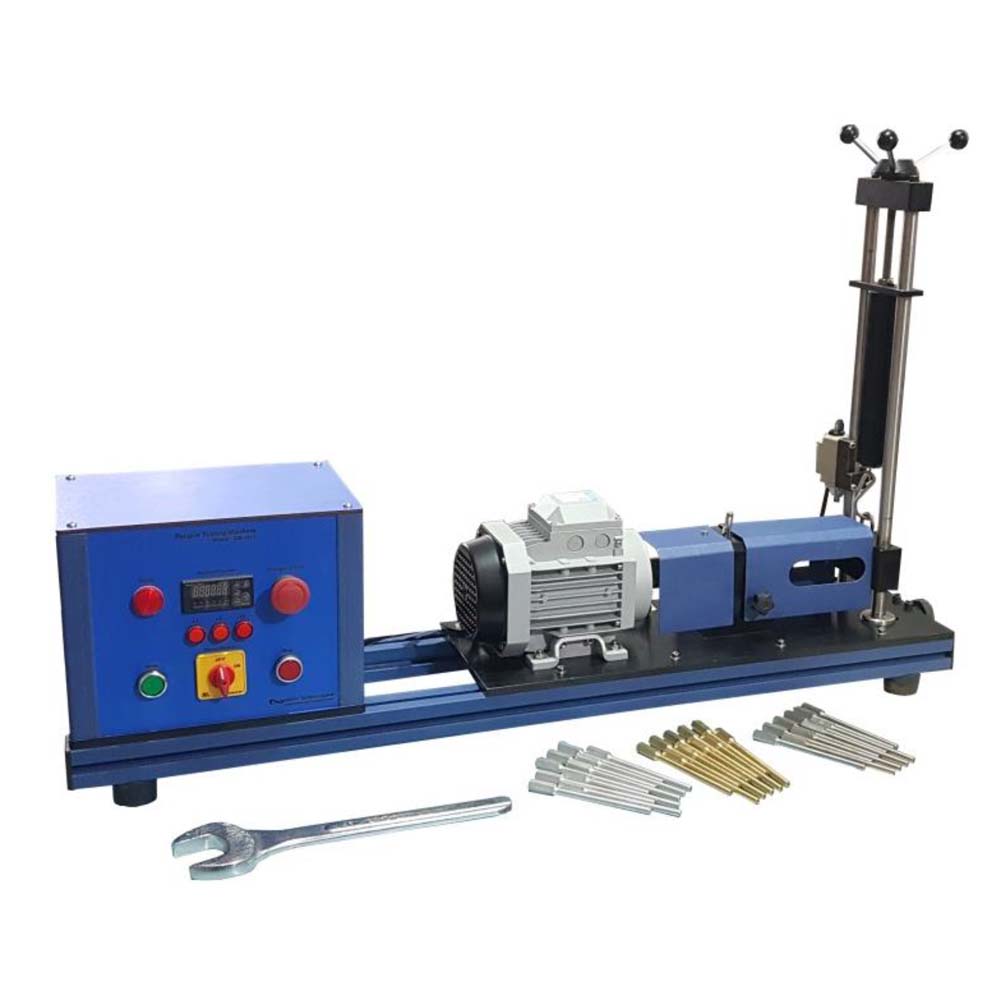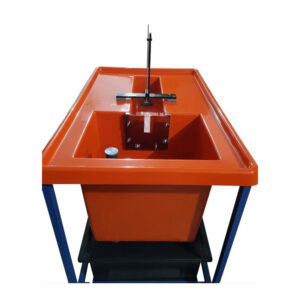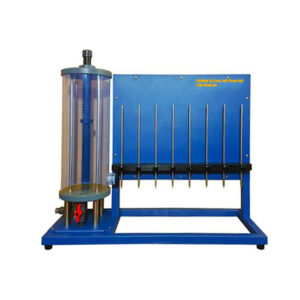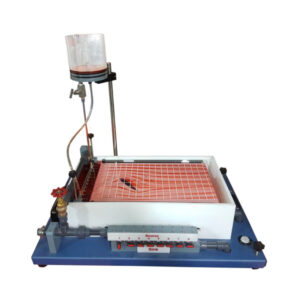The effects of weariness are explained by this device. A straightforward cantilever specimen rotates at a set or variable speed while demonstrating and physically confirming fundamental engineering principles, including a sinusoidal variation of bending stress. The fundamental concepts of fatigue testing can be explained using this benchtop equipment. Utilizing a spring balance and a point force, a revolving metal test bar that is clamped at one end is loaded. The cylindrical specimen experiences a cyclic bending strain as a result. A threaded spindle with a hand wheel can be used to continually change the amplitude of the cyclic loading. The specimen fractures as a result of material fatigue after a given number of stress cycles. In this case, the stop switch enables the machine to shut down automatically. An electrical counter that displays digitally counts the load cycles. The speed can also be measured with this. The effect of notching and surface finish on fatigue strength can be proven using specimens of various shapes.
Experiments:
- Fatigue strength of bars subject to cyclic bending load.
- Influence of different curvature radii and surface finish on fatigue strength.
- Preparation of a stress-number (S-N) diagram.
Specifications:
- Benchtop unit for fatigue strength testing.
- 3 cylindrical specimens made of steel, Ck35.
- Special shape specimens for demonstrating the influence of notching and surface finish.
- Recording of a stress-number (S-N) diagram.
- Adjustment using threaded spindle with hand wheel.
- Loading via moveable plain bearing.
- Automatic shut down on specimen fracture by stop switch integrated into the bearing.
- Electronic load cycle and revolutions counter with 8-digit digital display.
- Contact less inductive speed sensor.




